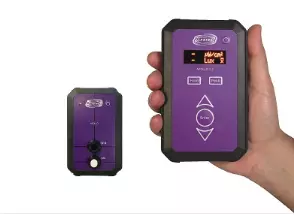
NM01M508
Choose Quantity
The Labino Apollo 3.0 Radiometer/Photometer Single Reader Unit is a sophisticated handheld device designed for precise and reliable light measurement in a variety of professional applications. This unit serves as the central interface for the Labino Apollo 3.0 measurement system, working in conjunction with a separate, wireless sensor unit to provide accurate radiometric and photometric readings.
As a radiometer, the Apollo 3.0 Reader Unit measures the power of light, specifically irradiance, while as a photometer, it measures the intensity of visible light as perceived by the human eye, specifically illuminance. This dual functionality makes it a versatile tool for professionals needing comprehensive light measurement capabilities.
The Reader Unit is engineered for ease of use, featuring a clear display and intuitive controls that facilitate quick and accurate readings. Its wireless connectivity with the sensor unit allows for flexible measurement in hard-to-reach or varied locations. Manufactured by Labino, a renowned leader in UV and NDT lighting and measurement solutions, the Apollo 3.0 Reader Unit is built to exacting standards, ensuring durability, reliability, and precision.
Key Features and Benefits:
Radiometer/Photometer Functionality:
Measures both irradiance and illuminance for comprehensive light analysis.
Versatile for a wide range of applications.
Wireless Sensor Connectivity:
Enables flexible measurement in various locations.
Simplifies measurement in hard-to-reach areas.
User-Friendly Interface:
Clear display and intuitive controls for easy operation.
Reduces measurement errors and enhances efficiency.
Accurate and Reliable Readings:
Provides consistent and dependable measurements.
Ensures confidence in measurement results.
Labino Quality:
Manufactured by a trusted provider of NDT and UV lighting solutions.
Ensures durability and long-term performance.
Applications:
Non-Destructive Testing (NDT):
UV and visible light intensity measurements in fluorescent penetrant and magnetic particle inspections.
Ensuring compliance with industry standards.
Quality Control:
Light intensity measurements in manufacturing and industrial processes.
Verifying lighting conditions for optimal product quality.
Laboratory and Research:
Precise light intensity measurements in scientific experiments.
Ensuring accurate and reproducible results.
Environmental Monitoring:
Measurement of light levels.
Workplace Safety:
Measurement of lighting levels to assure proper working conditions.
